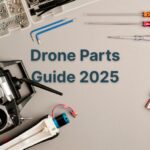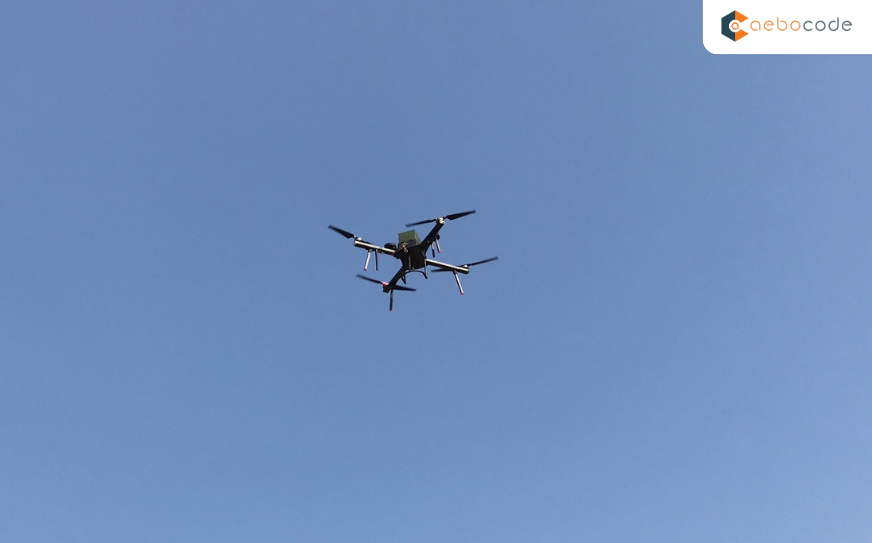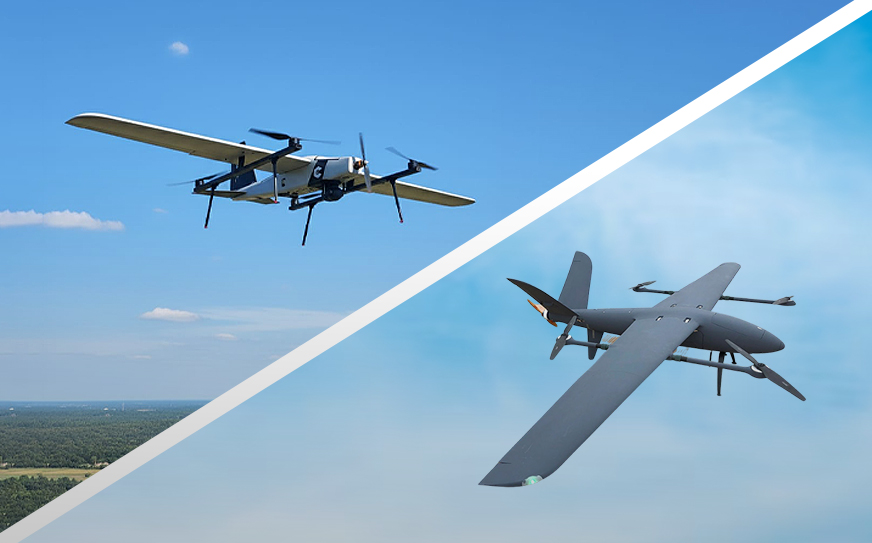
Drone Parts Guide 2025: Everything You Need to Know About Building and Maintaining a UAV
April 10, 2025
The Complete 2025 Guide: Top 10 Important Parts Required to Make Your Own Drone from Scratch
April 19, 2025Different Types of Drones and Their Uses: The Complete 2025 Guide for Beginners and Professionals
In 2025, drone technology is advancing faster than ever, with applications spreading rapidly across various industries. From defense and agriculture to logistics and infrastructure, drones are becoming essential tools for solving real-world problems. This complete guide explores the different types of drones available today and their wide-ranging uses. To begin with, whether you’re a tech enthusiast, an entrepreneur exploring drone-based solutions, or a government official looking to implement UAVs in operations, this guide will help you understand which drone suits your specific needs and how to make the most of its capabilities.
1. FPV (First Person View) Drones
FPV drones are designed to provide the pilot with live video feedback, typically via goggles or a screen. Popular among drone racing fans and hobbyists, they offer a more immersive and engaging flight experience.
Uses:
Drone racing and racing competitions
Close-up high-speed aerial cinematography
Simulation and training immersive flight experience
2. Nano Drones
Nano drones are the smallest class of drones, small enough to be held in one’s hand. Despite their small size, they are stable for flight and usually arrive mounted with standard cameras.
Applications:
Newbie learning and indoor flights
Used in schools and colleges for educational purposes
Recreational fun flying in tight spaces
3. Quadcopter Drones
Quadcopters are the most popular drone type, with four rotors. Their stable flight and ease of maneuverability make them suitable for commercial and recreational purposes.
Applications:
Aerial photography and video
Real estate and event coverage
Agricultural monitoring and spraying
4. Multicopter Drones (Hexacopter & Octacopter)
For example, multicopters are drones with more than four rotors. Hexacopters (6 rotors) and octacopters (8 rotors) offer more lift and redundancy and are suitable for heavy loads and commercial applications.
Applications:
High-end cinematography and media production
Industrial inspections (bridges, wind turbines)
Emergency response and rescue missions
5. VTOL (Vertical Take-Off and Landing) Drones
VTOL drones integrate the hovering capability of multicopters with the long-range efficiency of fixed-wing aircraft. They are capable of vertical takeoff and landing and transition to forward flight.
Applications:
Delivery over long distances in remote locations
Military tactical missions and reconnaissance
Scanning large areas (forests, agricultural fields)
6. Multirotor Drones
Multirotor drones are a broader category that encompasses quadcopters, hexacopters, and octacopters. They are general-purpose, offering hover capability, stable flight, and support for payloads or cameras.
Applications:
Aerial cinematography and documentation
Critical infrastructure inspection
Police and fire-fighting missions
7. Fixed-Wing Drones
Fixed-wing drones are similar to conventional airplanes. Moreover, they do not hover but can effectively scan very large areas at high speed and with low energy consumption.
Uses:
Agricultural land surveying and crop health monitoring
Border patrols and surveillance
Environmental studies and mapping
8. Cargo Drones
Cargo drones move cargo and supplies. They are used to carry heavy payloads and are increasingly used on delivery and logistics tasks.
Applications:
Medical supply delivery to remote areas
Military resupply missions
Delivery of e-commerce and postal packages
9. Survey and Surveillance Drones
In addition, these drones are fitted with high-definition cameras and LiDAR scanners, making them ideal for topographic mapping, 3D modeling, and security monitoring.
Applications:
Construction planning and land surveying
Monitoring crowds during events
Conservation and wildlife monitoring
10. Training Drones
Training drones have been designed to assist novice pilots in learning to fly without the expense of crashing costly gear. They tend to have less complicated controls and long-lasting constructions.
Applications:
Flight schools
Drone certification programs
School and university programs for drone training
11. Firefighting Drones
Firefighting drones are fitted with thermal imaging cameras, water or chemical payloads, and can penetrate areas too dangerous for human firefighters.
Uses:
Identification of fire hotspots
Delivery of extinguishing agents to inaccessible areas
Facilitating search and rescue missions in fires
Conclusion
The drone industry in 2025 has grown in many directions.
In contrast, small nano drones are now used in classrooms, while large cargo drones are changing how goods are delivered. At Aebocode Technologies, we’ve been part of this journey by building smart, scalable, and reliable drone solutions that meet real-world needs. We focus on making drones that are easy to use, built for Indian conditions, and ready for both commercial and defense use. From training kits for students to advanced VTOLs for professionals, we aim to support every level of drone user.






